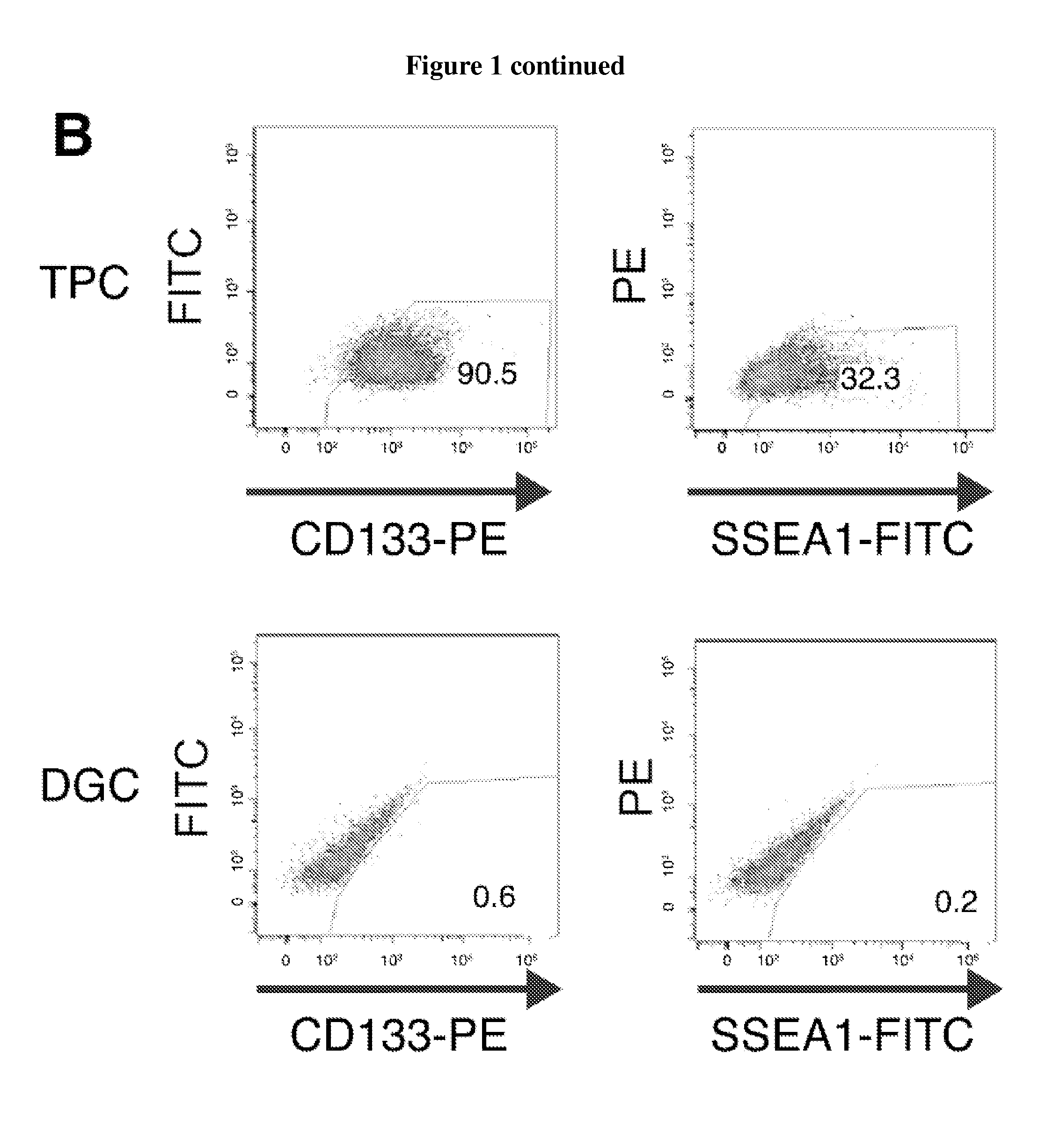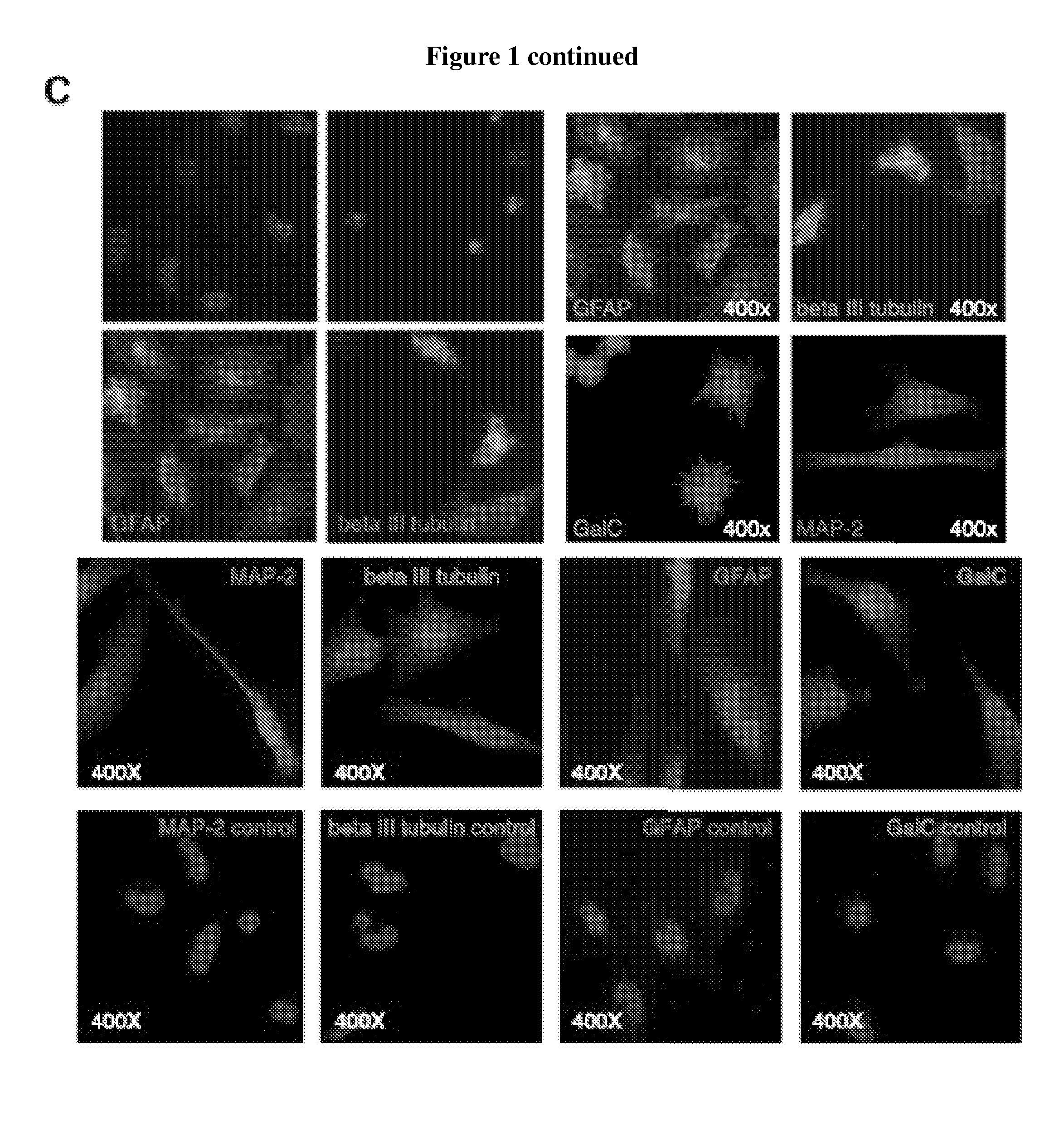Compositions and methods for detecting and treating glioblastoma
a technology for glioblastoma and compositions, applied in the field of compositions and methods for detecting and treating glioblastoma, can solve the problems of poor prognosis and the elusiveness of epigenetic determinants that contribute to this therapeutic resistan
- Summary
- Abstract
- Description
- Claims
- Application Information
AI Technical Summary
Benefits of technology
Problems solved by technology
Method used
Image
Examples
example 1
Transcription Factor (TF) Activity and Cis-Regulatory Elements Distinguish GBM TPCs
[0173]To identify distinguishing features of stem-like GBM (glioblastoma) cells, matched pairs of GBM cultures derived from three different human tumors were expanded as either stem-like tumor-propagating gliomaspheres (TPCs) in serum-free conditions or serum-grown adherent monolayers of non-tumor propagating, differentiated glioblastoma cells (DGCs). The alternate culture conditions confer GBM cells with distinct functional properties, the key of which is their in vivo tumor-propagating potential in orthotopic xenotransplantation limiting dilution assays (FIG. 1A). This functional difference is accompanied by differences in expression of the stem cell markers CD133 and SSEA-1 and the lineage differentiation markers GFAP and beta III tubulin (FIGS. 1B and 1C), consistent with a modulation of the stemness-differentiation axis by serum. Orthotopic xenotransplantation of as few as 50 GBM TPCs leads to fo...
example 2
Derivation of a Core Transcription Factor (TF) Set Sufficient to Induce a TPC Phenotype
[0178]Among the 19 TPC-specific TFs, SOX2, OLIG2, and ASCL1 have been shown to be necessary for spherogenicity and tumor-propagating potential of stem-like GBM cells. Without being bound to a particular theory, the hypothesis of a GBM developmental hierarchy raised the possibility that certain combinations of TFs might be sufficient to reprogram DGCs into TPCs, thus, overriding an epigenetic state transition. In fact, several TPC-specific TFs are components of cocktails that have been used to convert fibroblasts into neurons or neural stem cells. It was therefore considered whether these principles of cellular reprogramming could be applied to inter-convert epigenetic states in GBM.
[0179]To test the capacity of individual TFs or TF combinations to reprogram GBM cells, all 19 TPC-specific TFs were cloned and ectopically expressed in DGCs. Single-cell sphere formation in serum-free conditions, stem-...
example 3
Core Transcription Factors (TFs) Fully Reprogrammed the Epigenetic State of Induced TPCs
[0186]To examine the extent to which the four core TFs reprogram the epigenetic state of GBM cells, regulatory element activity and TF expression in secondary iTPC sphere cultures were surveyed. Consistent with their tumor-propagating ability, iTPCs gained H3K27ac at 66% of TPC-specific elements and lost H3K27ac at 82% of DGC-specific elements (FIG. 5A). Furthermore, 18 / 19 TPC-specific TFs were up-regulated in the iTPCs, and most acquired K27ac at their promoter, indicating that their epigenetic landscape closely resembled TPCs (FIGS. 5B and 5C). In contrast, DGCs expressing three TFs failed to reset a majority of TPC-specific and DGC-specific regulatory elements (FIGS. 4A-4C). Thus, the four core TFs were required to reprogram the epigenetic landscape of GBM cells, consistent with their requirement for the functional TPC phenotype.
[0187]The mechanistic basis for the sustained phenotype of iTPCs ...
PUM
| Property | Measurement | Unit |
|---|---|---|
| Time | aaaaa | aaaaa |
| Antisense | aaaaa | aaaaa |
| Level | aaaaa | aaaaa |
Abstract
Description
Claims
Application Information
 Login to View More
Login to View More - R&D
- Intellectual Property
- Life Sciences
- Materials
- Tech Scout
- Unparalleled Data Quality
- Higher Quality Content
- 60% Fewer Hallucinations
Browse by: Latest US Patents, China's latest patents, Technical Efficacy Thesaurus, Application Domain, Technology Topic, Popular Technical Reports.
© 2025 PatSnap. All rights reserved.Legal|Privacy policy|Modern Slavery Act Transparency Statement|Sitemap|About US| Contact US: help@patsnap.com



